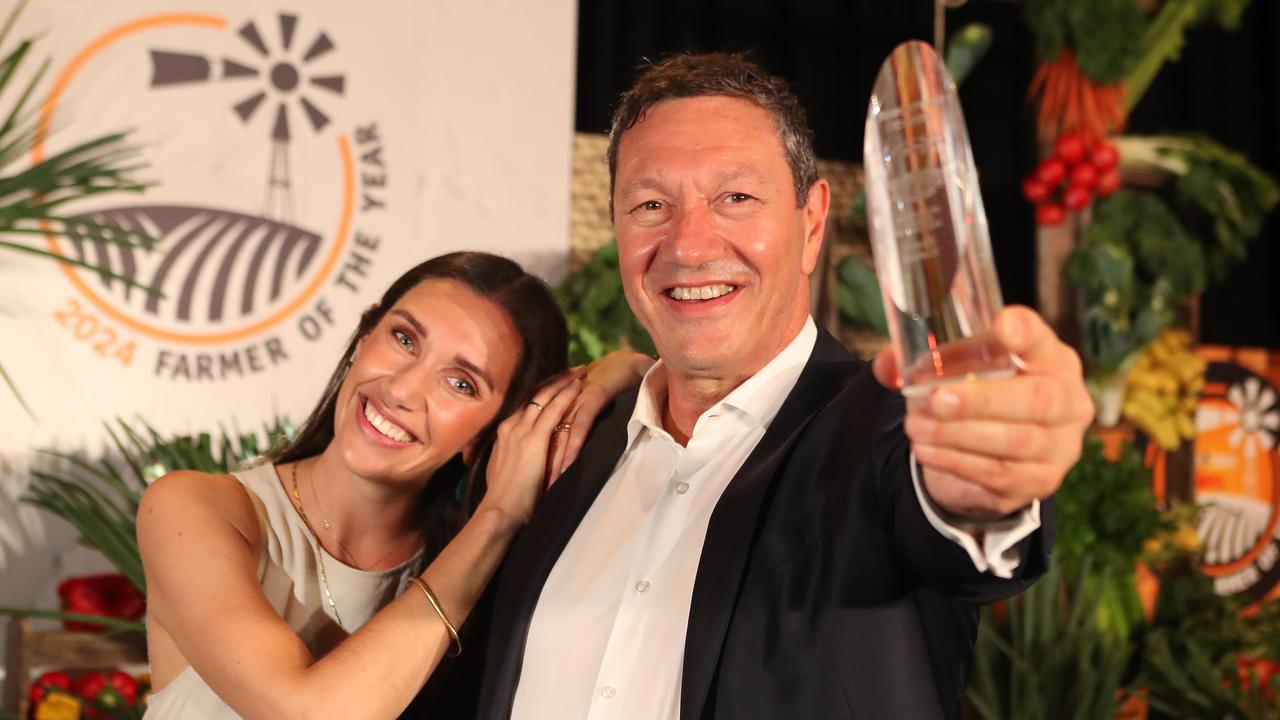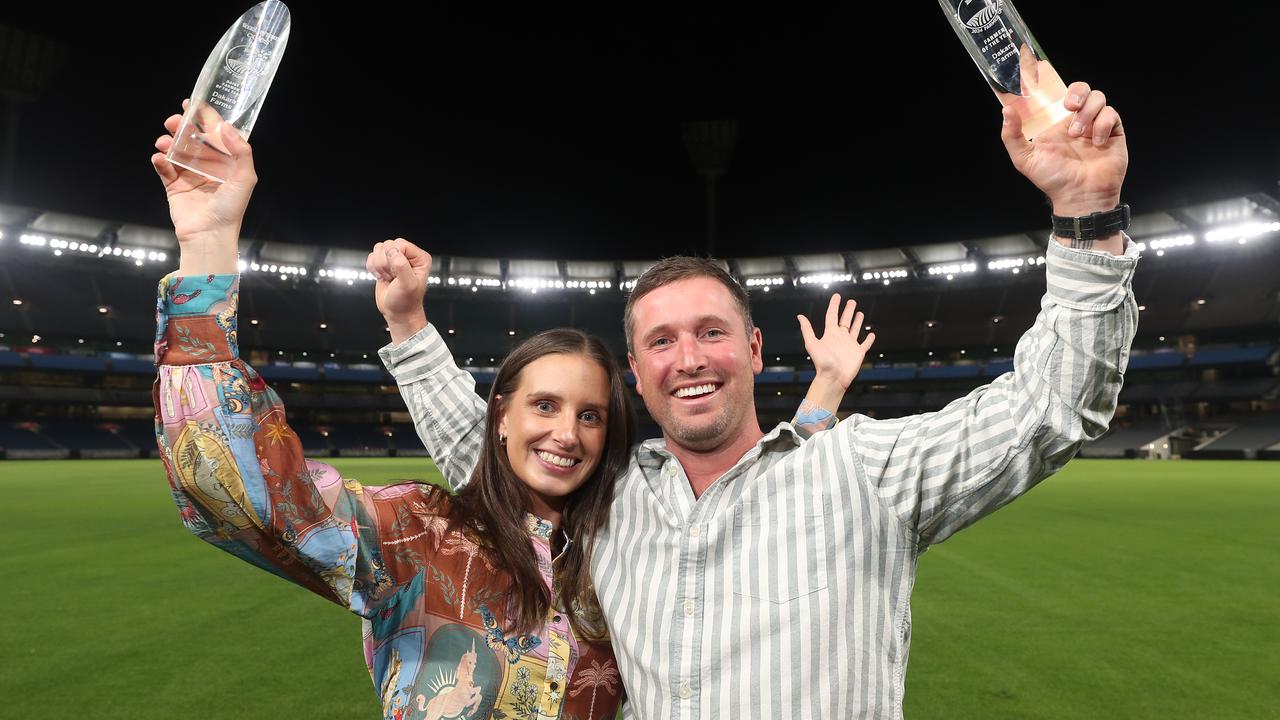Australian Asparagus Council boss Joe Vizzarri at home in Koo Wee Rup
AS PRESIDENT of the Australian Asparagus Council and one of the nation’s largest growers, Joe Vizzarri often gets asked if he’s stressed.

AS PRESIDENT of the Australian Asparagus Council and one of the nation’s largest asparagus and broccolini growers, Joe Vizzarri often gets asked if he’s stressed.
“Mate,” he said, throwing his arms in the air, “I thrive on stress.
“It’s a bit of a rush for me, sourcing and developing land, planting, growing, harvesting, juggling people and customers, logistics and weather to deliver my produce all over Australia on time 363 days a year.
“I reckon if I don’t have stress I create it.”
Joe has 36 farms around Koo Wee Rup in South Gippsland, totalling 970ha including six leased properties, with infrastructure including transport, processing and packaging sheds.
His spring crop of asparagus totals 3000 tonnes and summer 1000 tonnes, with broccolini — harvested year round — totalling 1500 tonnes.
Vizzarri Farms also imports 2000 tonnes of asparagus from Mexico (January to April) and Peru (April to September) to fill the gaps when there is no Australian supply.
HOME AND AWAY
ABOUT 70 per cent of Joe’s asparagus crop is sold in Australia to all the major supermarkets, and the rest exported to Japan, Hong Kong, Singapore, Korea and China through an export company Joe created, called Delica, which he sold and now has a share in.
Asparagus is sold in a variety of product types, including 180g bunches — easily identified in supermarkets for their purple rubber bands — as well as 500g grande bags, minis, 360g family bunches, purple and with plans to replant white in the near future.
Joe has a permanent staff of 130, but this balloons to 300 during asparagus season — with about 100 pickers employed through the Pacific Islander scheme from Vanuatu.
And all this, said the 54-year-old, from a “dumb kid who only got to fourth form (Year 10) in education”.
IN THE BLOOD
JOE’S parents, Mario and Gina, first moved to Koo Wee Rup in 1971, buying 40ha which they ran as a dairy farm. The area is now Australia’s asparagus heartland, but back then there were just a few farms growing the vegetable.
When demand from Japan grew for asparagus in the late 1980s, the Vizzarris saw an opportunity. It was around this time that Mario was involved in a car accident and became a paraplegic, and Joe took over the running of the farm.
The farm has grown to its current 970ha based on a land-buying strategy largely determined by Joe’s crop rotation and desire to grow more than just one crop.

Joe said he started growing broccolini to diversify and was one of the first to work with Perfection Fresh Australia, the company that owns the rights to the broccolini seed.
“Because it’s a propriety line, not everyone can grow it, so it’s a controlled market with a fixed price, so I love to grow it,” he said. “Because it’s a crop grown for 12 months of the year you can employ permanent staff, unlike asparagus which is seasonal.” He started growing 15,000 cartons in the early 2000s and is now, he said, the biggest grower in Australia, one of the few growers planting and harvesting year round.
BUG BEAR
THE downside to growing broccolini is its susceptibility to disease and so, rather than apply large quantities of chemicals, Joe has simply bought new land to grow more broccolini.
“In the last 12 months I’ve bought four new properties. I’m a firm believer if you do something, you do it right.
“To keep growing broccolini on the same ground I would need to use more and more chemicals, fumigation and massive amounts of lime.
“If I was just one farm I would give it a five-year break but by getting new land I can keep growing more.”
Joe grows broccolini for two years before turning the land over to asparagus, which requires less chemicals, and is farmed for about 12 years before applying a cover crop.
“The only thing we apply to asparagus is herbicide, which is well before harvest. The crop is about as close to organic as you can get.”
Joe said at times asparagus was susceptible to red-legged earth mite, which required the occasional spray.
GOING FOR GROWTH
ASPARAGUS seed is planted in the Vizzarri Farms nursery in September, with 50kg of seed supplying 80ha of crop. Each seed creates about three crowns, which are split in May, dipped in fungicide and refrigerated, which serves the dual purpose of helping growth once they are planted out in September, and also avoiding winter frost.
The second year of growth sees a small quantity of asparagus harvested, but full production is in the third year, for about 10 weeks in spring, finishing in mid-December. At its peak, with 300 pickers in the field working through the night from 11pm to maximise freshness, they harvest 60 tonnes a day “picked stick by stick”. By irrigating heavily — Vizzarri Farms sources irrigation water from bores and surface water, and uses lateral irrigators — Joe is able to have a summer crop from mid-January to March, which is also topped up with imports from Mexico and later Peru.
Although, he added, they planned to build up their summer production to reduce imports, with Joe currently buying farms in the north at Wemen, near Robinvale, and with an eye on land as far as Geraldton and Broome in Western Australia. “We aren’t damaged by imports because we import it ourselves,” Joe explained. “Customers demand asparagus all year round so we get it in.”
WEATHER THE STORM
JOE said this year’s season for asparagus had been tough, with four hail storms damaging the entire crop, while further volatile weather conditions created gluts or shortages. He said export sales had been hard work because an unfavourable exchange rate resulted in lower returns.
Wearing his Australian Asparagus Council hat, Joe said he believed the industry had hit its maturity.
“The average person eats 400g of asparagus, there’s room to grow that but not at the same speed as the last 10 years. So now we’ve got to target specific markets. I see room for canned, frozen, pre-prepared packs such as microwave or ready-to-eat. There are still ways to present and market asparagus.”


